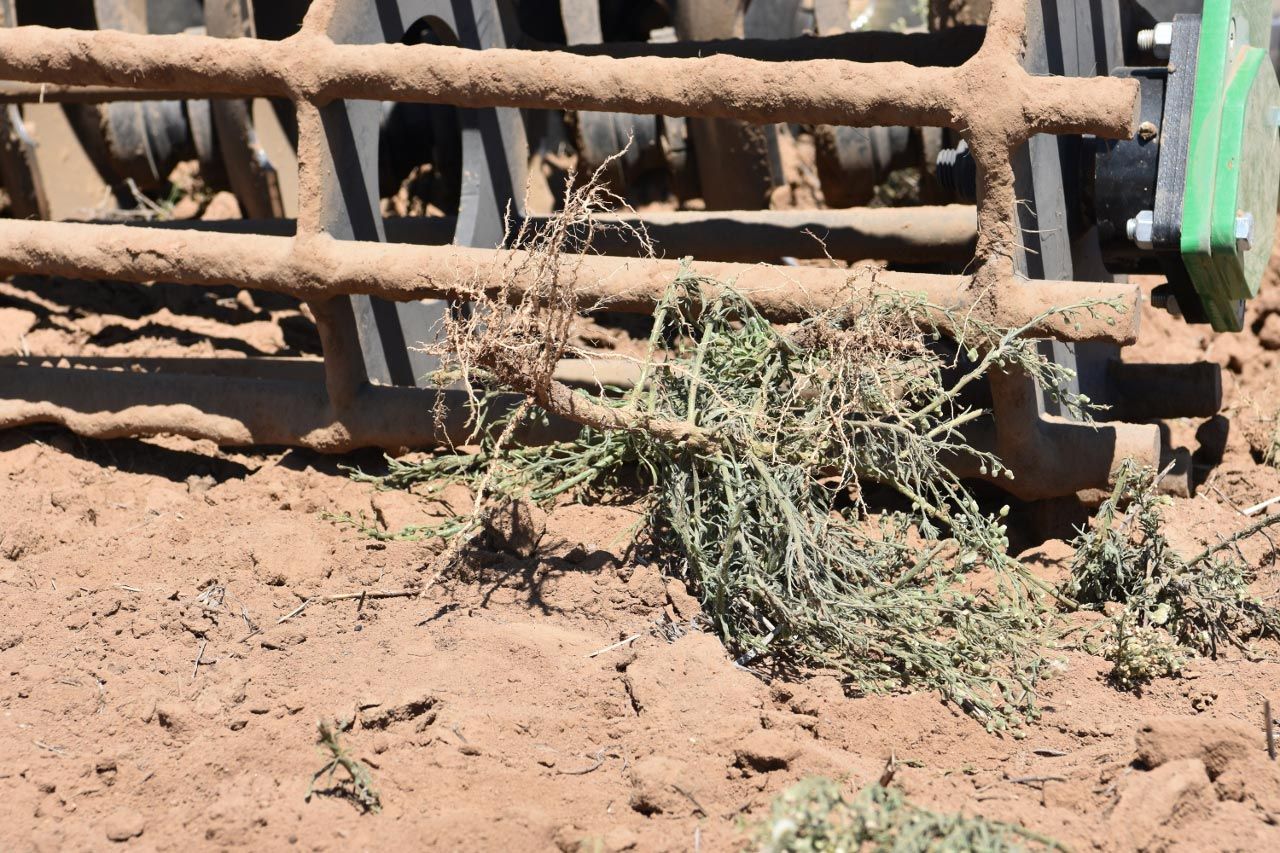Winning the War on Chemical Resistant Weeds
Fleabane. Marestail. Giant Ragweed. Waterhemp. Ryegrass. Beggartick. Pigweed.
No matter where you live – state or province, country or continent, Eastern or Western hemisphere – chances are if you are a farmer, you saw a name on the list above that made you cringe. And unfortunately, you are not alone.
According to the International Survey of Herbicide-Resistant Weeds, a scientific think tank committed to identifying, cataloguing, and controlling herbicide-resistant weeds around the world, the problem is large, and continuing to grow (pun intended!). There are currently 234 species of resistant weeds in 65 countries around the world, and more are added every growing season.
How does a weed become resistant to chemicals? The answer varies with each weed type and each associated herbicide. The basic answer is that as chemicals are repeatedly applied to certain weeds, those weeds’ molecular structure changes, or mutates. These mutations mean that while the plant could still be affected by the chemical (think stunted growth or less flower, seed, or leaf production, etc.), it doesn’t die or stop producing offspring as intended by the herbicide application. Thus, the plant has the ability to pass that modified DNA structure on to subsequent generations of weeds, and the basis for chemical resistance is born.
Chemically tolerant or resistant weeds are most common in areas or countries where agriculture is industrialized. The prevalence of chemicals in modern farming practices means there are exponentially more opportunities for altered DNA replication to happen in industrialized nations, leading to an increased number of weeds showing resistant characteristics in those areas.
There are a number of approaches to avoiding or controlling the spread of chemically-resistant weeds. While the options may not be for everyone, knowing even the most basic methods for combating herbicide resistance can help slow down the problem.
Go organic
This is definitely not an option for everyone, but not using chemicals for weed control is one way to diminish resistant tendencies. Organic farmers have to use cultural, situational, and mechanical controls to fight their weed infestations. Cultural controls include things like making growing conditions unfavourable by using additives to change soil pH. Situational controls extend to things like crop rotations and companion planting. Mechanical controls encompass all types of tillage when used in weed control situations.
Optimise soil nutrient contents
Knowing your land’s soil types and that soil’s nutrient composition can go a long way toward promoting crop growth and combating weed infestation. Test your soils for deficiencies, and add nutrients customized for your planned crop. A balanced soil nutrient profile can help push crops through growth stages (germination, emergence, canopy) as fast as possible. This jumpstart makes them bigger faster, which makes it easier for them to fend off and stunt the growth of competitive weeds.
Rotate crops
Growing the same crops in the same places every year produces year-upon-year tolerance to chemicals in many types of weeds. Break up this cycle by changing the base crop, herbicide applications, and timing for each paddock. Get assistance from a local soil conservationist or government agriculture office to balance crop herbicide and nutrient needs within your farming operation.
Hit the Dirt
Zero in on problem patches and target areas of weed density by physically inspecting your paddocks. By getting at eye level with your crops and their weedy competitors, you can identify and customize applications for your paddocks’ specific problem weed types instead of constantly relying on broadcast herbicides.

Go Big, or Don’t Go
Don’t use less herbicide or a lighter concentration than what is specified by the manufacturer on the mixing label. Under-mixing herbicides actually helps to promote chemical resistance. Weakly mixed or lightly applied chemicals function in weeds like vaccinations do in people: small doses eventually build up immunity.
Select the proper seed hybrids
All seed hybrids are not created equal. Talk with your local agronomist or seed dealer to select hybrids genetically designed to be grown in your area. Localized hybrids often have traits that encourage early germination and allow them to withstand colder soil temperatures than competitive weed seeds. These hybrids can be planted earlier than most wild weed seeds can germinate, spurring crop growth while inhospitable conditions retard the growth of competitive weeds.
Insist on implement hygiene
Ever wonder why weeds seem to be more prevalent in the outside rows of a paddock, but less common further in? In many cases, it’s a matter of implement hygiene. When equipment moves from farm to farm or paddock to paddock, weeds and their seeds get transferred along with the implements. This weedy trash generally falls off the machine in the first rounds, as evidenced by the weed propagation in most paddocks. As a weed control best practice, require cleaning of implements before entering paddocks, especially if employing custom operators, and for all equipment after each growing season.
Plant for Production
Maintaining and calibrating planting equipment per manufacturer recommendations can pay back greatly when it comes to weed control. How, you might ask? Malfunctioning planter and diagnostic parts like vacuum tubes, seed plates, and monitors can give false information about seeding and fertilizer application rates. This can leave empty spots or slow growth areas in your paddocks, leaving the door open for opportunistic weeds to take over.
Make Another Pass at Weed Control
Tillage is a great way to control weeds without using additional chemicals. Paired with the other methods and tips above, passes through post-emergent crops with tillage equipment can provide soil disruption to expose or uproot weeds between rows. This in turn contributes to dehydration or growth delays in those weeds, allowing time for crops to overcome and eventually kill their competitors. Tillage also can have the additional benefit of killing non-plant undesirables, like fungi and pests, in many paddocks.
While the war on chemical-resistant weeds is far from over, farmers have a number of control methods at their disposal. Alone, these methods may not win the war, but together they make a suitable arsenal for helping farmers win key battles against chemical-resistant weeds the world over.








